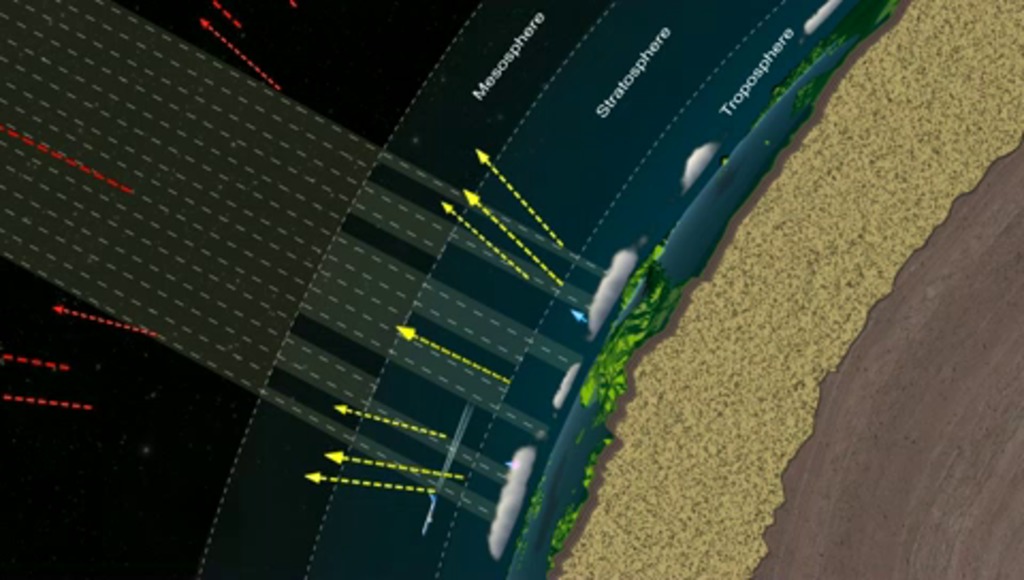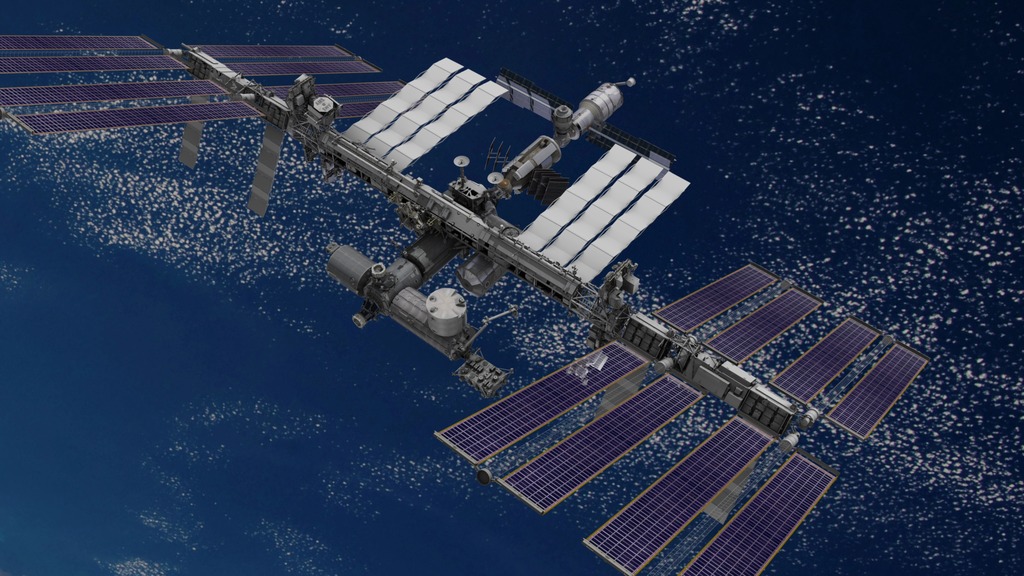Earth's Energy Budget
Earth's energy budget is a metaphor for the delicate equilibrium between energy received from the Sun versus energy radiated back out in to space. Research into precise details of Earth's energy budget is vital for understanding how the planet's climate may be changing, as well as variabilities in solar energy output.
NASA’s (The Clouds and the Earth's Radiant Energy System) CERES and NASA's Total and Spectral solar Irradiance Sensor (TSIS-1), missions play key roles in our continued understanding of Earth’s Energy Budget.
NASA’s TSIS helps scientists keep a close watch on the sun’s energy input to Earth. Various satellites have captured a continuous record of this solar energy input since 1978. TSIS-1 sensors advance previous measurements, enabling scientists to study the sun's natural influence on Earth's ozone layer, atmospheric circulation, clouds, and ecosystems. These observations are essential for a scientific understanding of the effects of solar variability on the Earth system.
TSIS-1 makes two key measurements: total solar irradiance, or TSI, the sun's total energy input into Earth, and solar spectral irradiance (SSI), the distribution of the sun's energy input across ultraviolet, visible, and infrared wavelengths of light. TSI measurements are needed to quantify the solar variations in the total amount of energy input to the Earth. SSI measurements are also vital because different wavelengths of light are absorbed by different parts of the atmosphere.
For more than 20 years, NASA Langley's CERES (System) instruments have measured the solar energy reflected by Earth, the heat the planet emits, and the role of clouds in that process. The final CERES Flight Model, CERES FM6 launched aboard NOAA’s JPSS-1 in Fall 2017.
CERES FM6 contributes to an already extensive CERES dataset that helps scientists validate models that calculate the effect of clouds on planetary heating and cooling. The same data can also be helpful for improving near-term, seasonal forecasts influenced by weather events such as El Niño and La Niña. El Niño and La Niña are weather patterns that develop when ocean temperatures fluctuate between warm and cool phases in the Equatorial Pacific Ocean. Built by Northrop Grumman and managed by Langley, CERES FM6 joins five other CERES instruments orbiting the planet on three other satellites.
NASA Goddard Space Flight Center manages the TSIS-1 project. The University of Colorado's Laboratory for Atmospheric and Space Physics (LASP) built both instruments and provides mission operations. The International Space Station carries TSIS-1. Earth's energy budget is a metaphor for the delicate equilibrium between energy received from the Sun versus energy radiated back out in to space. Research into precise details of Earth's energy budget is vital for understanding how the planet's climate may be changing, as well as variabilities in solar energy output.
NASA’s (The Clouds and the Earth's Radiant Energy System) CERES and NASA's Total and Spectral solar Irradiance Sensor (TSIS-1), missions play key roles in our continued understanding of Earth’s Energy Budget.
NASA’s TSIS helps scientists keep a close watch on the sun’s energy input to Earth. Various satellites have captured a continuous record of this solar energy input since 1978. TSIS-1 sensors advance previous measurements, enabling scientists to study the sun's natural influence on Earth's ozone layer, atmospheric circulation, clouds, and ecosystems. These observations are essential for a scientific understanding of the effects of solar variability on the Earth system.
TSIS-1 makes two key measurements: total solar irradiance, or TSI, the sun's total energy input into Earth, and solar spectral irradiance (SSI), the distribution of the sun's energy input across ultraviolet, visible, and infrared wavelengths of light. TSI measurements are needed to quantify the solar variations in the total amount of energy input to the Earth. SSI measurements are also vital because different wavelengths of light are absorbed by different parts of the atmosphere.
For more than 20 years, NASA Langley's CERES (System) instruments have measured the solar energy reflected by Earth, the heat the planet emits, and the role of clouds in that process. The final CERES Flight Model, CERES FM6 launched aboard NOAA’s JPSS-1 in Fall 2017.
CERES FM6 contributes to an already extensive CERES dataset that helps scientists validate models that calculate the effect of clouds on planetary heating and cooling. The same data can also be helpful for improving near-term, seasonal forecasts influenced by weather events such as El Niño and La Niña. El Niño and La Niña are weather patterns that develop when ocean temperatures fluctuate between warm and cool phases in the Equatorial Pacific Ocean. Built by Northrop Grumman and managed by Langley, CERES FM6 joins five other CERES instruments orbiting the planet on three other satellites.
NASA Goddard Space Flight Center manages the TSIS-1 project. The University of Colorado's Laboratory for Atmospheric and Space Physics (LASP) built both instruments and provides mission operations. The International Space Station carries TSIS-1.
NASA's Total and Spectral solar Irradiance Sensor, or TSIS-1, is a mission to measure the sun's energy input to Earth. Various satellites have captured a continuous record of this solar energy input since 1978. TSIS-1 sensors advance previous measurements, enabling scientists to study the sun's natural influence on Earth's ozone layer, atmospheric circulation, clouds, and ecosystems. These observations are essential for a scientific understanding of the effects of solar variability on the Earth system.
NASA Goddard Space Flight Center manages the project. The University of Colorado's Laboratory for Atmospheric and Space Physics (LASP) built both instruments and provides mission operations. The International Space Station carries TSIS-1.
TSIS-1 makes two key measurements: total solar irradiance, or TSI, the sun's total energy input into Earth, and solar spectral irradiance (SSI), the distribution of the sun's energy input across ultraviolet, visible, and infrared wavelengths of light. TSI measurements are needed to quantify the solar variations in the total amount of energy input to the Earth. SSI measurements are also vital because different wavelengths of light are absorbed by different parts of the atmosphere.
NASA's Total and Spectral solar Irradiance Sensor, or TSIS-1, will measure the total amount of solar energy input to Earth as well as the distribution of The Sun's energy input across a wide range of wavelengths. In this animation we see how various wavelengths of light are partially reflected into space at different places in the column of atmosphere above the ground.
The sensors of TSIS-1, the Total Irradiance Monitor (TIM) and the Spectral Irradiance Monitor (SIM), are significantly improved versions of sensors included on NASA’s Solar Radiation and Climate Experiment (SORCE) mission launched in 2003. Both sensors are more accurate and more precise than their predecessors.
Credits
Please give credit for this item to:
NASA's Goddard Space Flight Center
Music Provided by Killer Tracks
-
Producer
- Michael Starobin (KBR Wyle Services, LLC)
-
Animators
- Lisa Poje (USRA)
- Vuk Nikolic (Freelance)
-
Visualizer
- Greg Shirah (NASA/GSFC)
-
Narrator
- Michael Starobin (KBR Wyle Services, LLC)
-
Writer
- Michael Starobin (KBR Wyle Services, LLC)
-
Editor
- Michael Starobin (KBR Wyle Services, LLC)
-
Science advisor
- Virginia "Jill" Teige (NASA/LaRC)
-
Outreach coordinator
- Virginia "Jill" Teige (NASA/LaRC)
Release date
This page was originally published on Thursday, July 20, 2017.
This page was last updated on Monday, July 15, 2024 at 12:11 AM EDT.

![Music: Organic Machine by Bernhard Hering [GEMA] and Matthias Kruger [GEMA]Complete transcript available.](/vis/a010000/a013700/a013799/2020Temp.png)

![Music: Dawn Drone by Juan Jose Alba Gomez [SGAE]Complete transcript available.](/vis/a010000/a012600/a012669/LARGE_MP4-EPICEclipse_Rescript_large.00696_print.jpg)